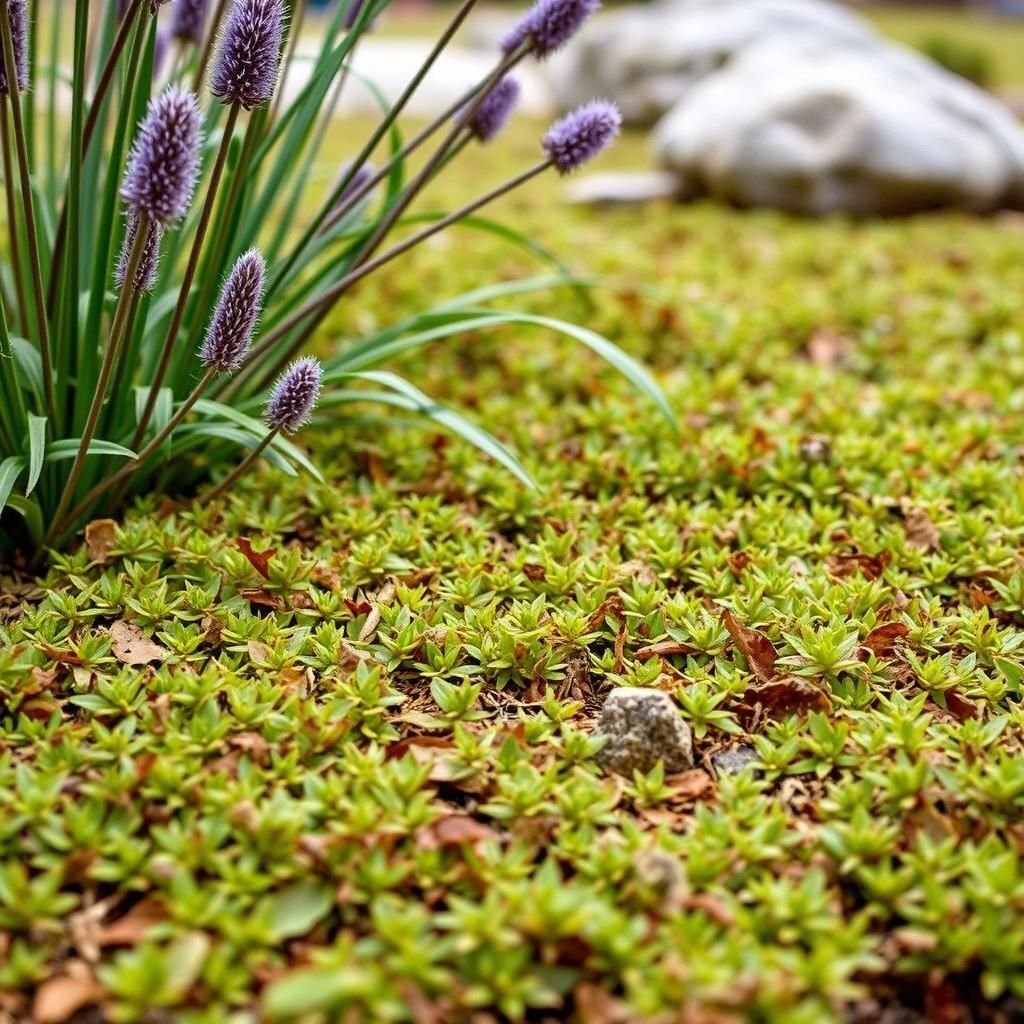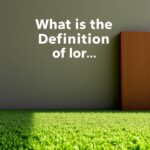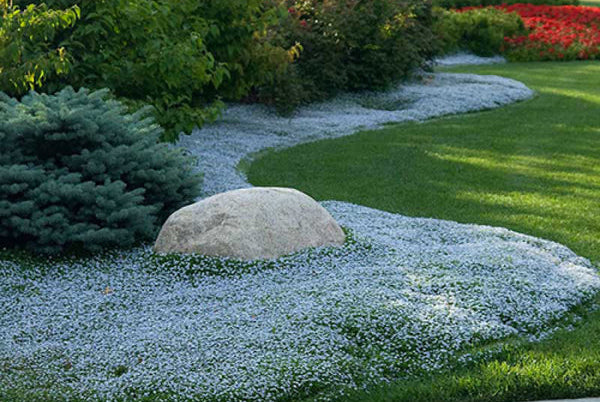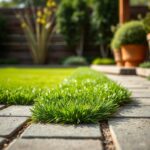What is the best Australian native ground cover lawn substitute? Discover the Top Options for Your Garden

In the quest for a beautiful and sustainable garden, selecting the right ground cover can make all the difference. Australian native plants offer a wide array of options that not only enhance the aesthetics of your landscape but also contribute to local biodiversity. This article will explore the best Australian native ground cover substitutes for traditional lawns, highlighting their unique characteristics, benefits, and suitability for various garden conditions. Whether you're looking to reduce water usage, attract wildlife, or simply create a stunning visual display, discover the top ground cover options that will thrive in your garden while embracing Australia’s natural beauty.
What is the Best Australian Native Ground Cover Lawn Substitute?
Choosing the best Australian native ground cover lawn substitute involves considering various factors such as maintenance, drought resistance, and aesthetic appeal. One highly recommended option is Kangaroo Paw (Anigozanthos) due to its low water requirements, vibrant flowers, and resilience in tough conditions. It provides an appealing alternative to traditional lawns while promoting biodiversity by attracting native pollinators. Other contenders like Native Bluebell (Wahlenbergia) and Creeping Boobialla (Myoporum parvifolium) also offer unique textures and color palettes that harmonize well in a native garden. Ultimately, the selection should align with the specific environmental conditions and personal preferences of the gardener.
Benefits of Using Native Ground Covers
Utilizing native ground covers offers numerous benefits, including reduced water usage, lower maintenance requirements, and enhanced ecological health. These plants are adapted to local climates and soil conditions, which means they are often more resilient against pests and diseases. Additionally, native ground covers help support local wildlife by providing habitat and food sources, thereby contributing to local biodiversity and ecosystem stability.
Top Choices for Australian Native Ground Covers
Some of the top choices for Australian native ground covers include Creeping Thyme (Thymus serpyllum), Native Bluebell (Wahlenbergia), and Creeping Boobialla (Myoporum parvifolium). These species are known for their low growth habits and ability to thrive in a variety of soil types. Each has distinct characteristics, such as colorful blooms and aromatic foliage, making them attractive additions to both residential and commercial landscapes. They not only provide ground coverage but also enhance the aesthetic value of gardens.
Maintenance Tips for Native Ground Covers
Maintaining native ground covers requires less effort than traditional lawns, but there are still essential practices to ensure their health and vigor. Regularly checking for weeds and providing adequate drainage is crucial, as many native plants are susceptible to rot in overly wet conditions. Light watering during prolonged dry spells can help them establish their root systems, but once established, they generally require minimal irrigation. Additionally, periodic pruning can encourage bushier growth and flowering.
Factors to Consider When Choosing a Substitute
When selecting the best substitute for lawn cover, it's vital to consider environmental factors such as soil type, sun exposure, and water availability. For example, areas with poor drainage might benefit from ground covers like Creeping Boobialla, which thrives in various conditions, while sunny spots may suit the vibrant Kangaroo Paw. Planting in clusters based on these factors can ensure better growth and a more cohesive look in your garden.
Environmental Impact of Native Ground Covers
Opting for native ground covers positively impacts the environment in multiple ways. It reduces the need for chemical fertilizers and pesticides, which can pollute waterways and harm wildlife. Furthermore, these plants contribute to soil health by promoting beneficial microorganisms and preventing erosion. They also require less water than non-native species, making them a sustainable choice in water-scarce regions, thereby supporting efforts for ecological conservation.
| Ground Cover | Sun Exposure | Water Requirements | Soil Type |
|---|---|---|---|
| Kangaroo Paw | Full sun | Low | Well-drained |
| Creeping Boobialla | Full sun to partial shade | Low to moderate | Adaptable |
| Native Bluebell | Full sun to partial shade | Low | Well-drained |
| Creeping Thyme | Full sun | Low | Well-drained |
What is the best ground cover to replace grass in Australia?

The best ground cover to replace grass in Australia depends on various factors such as climate, soil type, and the intended use of the area. However, some of the most popular ground covers that thrive in Australia's diverse conditions include:
1. Creeping Thyme - This low-growing herb offers drought resistance and aromatic foliage while producing small purple flowers that attract pollinators. It is an excellent option for sunny areas, requiring minimal maintenance.
2. Kikuyu Grass - While technically a grass, Kikuyu is widely used as ground cover due to its vigorous growth and ability to withstand heavy foot traffic. It is ideal for sunny regions but may need regular mowing to maintain a tidy appearance.
3. Native Grasses - Varieties such as Wallaby Grass or Kangaroo Grass are excellent native substitutes that adapt well to the local environment. They require less water and provide habitat for local wildlife.
4. Blue Star Creeper - This ground cover features small blue flowers and grows well in both sun and shade. It is particularly suited for moist areas and is effective for preventing soil erosion.
5. Dichondra - Also known as Silver, this tender perennial has round leaves and is often used as an alternative to turf in cooler areas. It thrives in shady spots and offers a lush green look throughout the year.
See also:
Creeping Thyme as Ground Cover
Creeping Thyme is a fantastic choice for those looking to replace grass with a hardy ground cover in Australia. This plant mimics the aesthetic of traditional lawns with the added benefits of drought tolerance and low maintenance requirements.
- Drought Resilience: Its ability to thrive in dry conditions makes it adaptable to Australia’s varying climates.
- Pollinator Friendly: The small flowers attract bees and butterflies, contributing positively to the local ecosystem.
- Minimal Maintenance: Once established, it needs little care other than occasional watering and light trimming.
Kikuyu Grass Characteristics
Kikuyu Grass is known for its fast growth and resilience, making it popular in sports fields and backyards across Australia. Its benefits include a lush appearance and capability to withstand heavy traffic.
- Fast Establishment: Kikuyu quickly establishes itself, often within a few weeks, ensuring that bare areas are soon covered.
- Traffic Tolerance: Its robust nature allows it to recover quickly from wear and tear, making it suitable for busy areas.
- Vibrant Green Color: This grass offers a vibrant lawn-like look that appeals to many Australian homeowners.
Benefits of Native Grasses
Native grasses provide a sustainable alternative to traditional lawns, requiring significantly less water and maintenance, which aligns well with Australia’s environmental needs.
- Water Efficiency: They are naturally adapted to local conditions and typically require less irrigation.
- Habitat Creation: Native grasses support local wildlife by providing habitat and food sources.
- Low Maintenance: These grasses seldom need mowing or fertilizing, saving time and resources.
Blue Star Creeper Advantages
Blue Star Creeper is particularly well-suited for filling in spaces between pavers or rocks due to its low height and widespread growth pattern.
- Versatile Growth: It can thrive in various light conditions, from full sun to partial shade, making it adaptable for different locations.
- Erosion Control: Its dense mat helps prevent soil erosion on slopes or exposed areas.
- Seasonal Flowers: The small blue flowers provide aesthetic appeal and draw beneficial insects.
Dichondra as a Grass Alternative
Dichondra, recognized for its round leaves and lush appearance, serves as an excellent alternative in regions where grass may struggle.
- Shade Tolerance: This plant performs well in shaded areas where many traditional grasses fail to thrive.
- Soft Texture: Its foliage creates a soft carpet-like feel underfoot, making it pleasant for outdoor activities.
- Year-Round Greenery: It maintains its vibrant appearance throughout different seasons, offering continuous greenery.
What is the native grass in Australia without mow?

The native grass in Australia that is often preferred for areas that do not require mowing is known as native mat grass, scientifically referred to as Lepidosperma spp. This grass is characterized by its low growth habit and resilience to various environmental conditions, making it an excellent choice for low-maintenance landscapes.
Characteristics of Native Mat Grass
Native mat grass is typically found in Australia’s diverse ecosystems and has several defining characteristics:
- Low Growth Habit: This grass grows close to the ground, usually not exceeding 30 cm in height, which minimizes the need for mowing.
- Drought Resistance: Adapted to the Australian climate, it requires less water than traditional lawn grasses.
- Soil Stabilization: Its root system is effective in preventing soil erosion, making it suitable for slopes and sandy areas.
Ecological Benefits
Using native mat grass in landscaping can provide a range of ecological benefits:
- Habitat Preservation: It supports local wildlife by providing habitat and forage for native animals.
- Biodiversity Enhancement: Incorporating Australian native grasses promotes the biodiversity of local flora and fauna.
- Soil Health: Native grasses help improve soil structure and fertility through the addition of organic matter.
Maintenance Requirements
One of the main advantages of native mat grass is its low maintenance:
- Minimal Watering: Once established, it requires little to no watering, reducing water usage significantly.
- No Mowing Needed: Its low growth means there's no need for regular mowing, saving time and resources.
- Pest Resistance: This grass is typically more resistant to pests and diseases, which minimizes the need for chemical treatments.
Suitable Locations
Native mat grass thrives in various environments across Australia:
- Sandy Soils: It excels in well-drained sandy soils and is ideal for coastal areas.
- Open Sunlight: Prefers full sun but can tolerate some shade, making it versatile for different landscape designs.
- Urban Landscapes: Works well in urban environments where low maintenance is a priority for landscaping.
Comparison with Introduced Grasses
When compared to introduced grass species, native mat grass has distinct advantages:
- Adaptability: Thrives in local climates without requiring fertilizers or extensive care.
- Environmental Impact: Produces fewer environmental concerns by not displacing native species.
- Carbon Sequestration: Contributes positively to carbon sequestering in the atmosphere, aiding in climate change mitigation.
What is the best ground cover to replace grass?

The best ground cover to replace grass varies depending on your climate, soil type, and the intended use of the area. However, some popular and effective options include creeping thyme, sedum, clover, and moss. Each of these ground covers provides unique benefits while reducing maintenance compared to traditional grass lawns.
See also:
Creeping Thyme
Creeping thyme is a drought-resistant ground cover that thrives in sunny areas with well-draining soil. It offers a dense mat of green foliage, producing small, fragrant purple flowers that attract pollinators. This plant is excellent for filling in gaps in your garden while requiring minimal maintenance.
- Low water needs, making it ideal for xeriscaping.
- Attractive to bees and butterflies, increasing garden biodiversity.
- Forms a soft carpet that can withstand light foot traffic.
Sedum
Sedum, often known as stonecrop, is a succulent ground cover that is perfect for rocky, poor soils. Its thick leaves store moisture, making it a great choice for arid regions and gardens that experience drought conditions. Sedum comes in various species, some with vibrant foliage that changes color with the seasons.
- Thrives in full sun and well-draining soil.
- Requires very little watering once established.
- Many varieties produce striking flowers that enhance visual interest.
Clover
Clover, especially white clover, is an excellent alternative to grass due to its nitrogen-fixing properties, which help improve soil quality. It forms a dense, low-growing mat that stays green throughout the seasons and outcompetes weeds effectively. Additionally, clover requires less mowing than traditional lawns.
- Natural fertilizer due to its nitrogen-fixing ability.
- Soft texture makes it pleasant to walk on.
- Attracts beneficial insects like bees, promoting a healthy ecosystem.
Moss
Moss is an ideal ground cover for shaded areas where grass struggles to grow. It creates a lush, green carpet that can thrive in moist, acidic soil. Moss requires minimal maintenance, making it perfect for low-maintenance landscapes.
- Requires no mowing or fertilization.
- Thrives in low-light conditions, ideal for shady spots.
- Helps retain soil moisture and prevent erosion.
Ajuga (Bugleweed)
Ajuga is a versatile ground cover known for its vibrant foliage and attractive blue flower spikes in spring. It grows well in a range of soil conditions and light levels, making it adaptable to various garden settings. Ajuga quickly fills in spaces and offers an eye-catching alternative to grass.
- Fast-growing, quickly covers bare spots.
- Attractive foliage that changes color with the seasons.
- Serves as a great weed suppressant due to its dense growth.
What is a natural alternative to grass lawn?
:max_bytes(150000):strip_icc()/lawn-alternatives-5113222copy-687f7d8442474d96b96cb06848670179.jpg)
A natural alternative to a grass lawn that has gained popularity in recent years is the use of native plants and ground covers. These alternatives not only provide aesthetic value but also promote biodiversity, require less maintenance, and conserve resources like water and fertilizers. The idea is to replace traditional grass lawns with plants that are better suited to the local climate and soil conditions, thus creating a more sustainable and environmentally friendly landscape.
Advantages of Native Plants
Using native plants in place of traditional grass offers numerous benefits:
- Biodiversity: Native plants attract local wildlife, including pollinators like bees and butterflies.
- Low Maintenance: These plants are adapted to the local environment, requiring less water and fewer pesticides.
- Soil Health: Native plants often improve soil quality by contributing organic matter and preventing erosion.
Ground Covers as Alternatives
Ground covers can serve as effective alternatives to grass lawns, offering a lush appearance with various options:
- Creeping Thyme: A fragrant, drought-resistant plant that blooms beautifully.
- Ajuga: Known for its vibrant foliage and blue flowers, it grows quickly and provides excellent coverage.
- Wildflower Meadows: A mix of native wildflowers that provides color, texture, and habitat for wildlife.
Benefits of Xeriscaping
Xeriscaping is a landscaping practice that utilizes drought-resistant plants, making it an ideal alternative to high-water lawns:
- Water Conservation: Reduces the need for irrigation, making it ideal for arid climates.
- Cost-Effective: Lower water bills and maintenance costs over time.
- Aesthetic Appeal: Can create visually stunning landscapes that vary throughout the seasons.
Incorporating Edible Landscapes
Integrating edible plants into landscaping can provide food along with beauty, presenting an innovative alternative to traditional lawns:
- Herbs and Vegetables: Many herbs and vegetable plants can serve as attractive ground covers.
- Fruit Trees: Incorporating dwarf trees can provide shade and produce fruit.
- Perennial Vegetables: Such as asparagus or rhubarb, can be aesthetically pleasing and productive.
Creating a Rock Garden
A rock garden can serve as a low-maintenance alternative, blending natural elements with plants:
- Drought-Resistant Plants: Many succulents and alpine plants thrive in rocky environments.
- Visual Interest: Rocks and stones can provide texture and contrast to the landscape.
- Soil Drainage: Improved drainage can help prevent water pooling and promote healthy plant growth.
Questions from Our Readers
What is the best Australian native ground cover lawn substitute?
The best Australian native ground cover lawn substitute is often considered to be Kangaroo Paw (Anigozanthos). This plant is not only drought-tolerant but also provides vibrant colors and attracts native wildlife, making it an excellent choice for those looking to create a sustainable landscape.
How does Australian native ground cover benefit the environment?
Australian native ground covers improve the environment by promoting biodiversity, reducing the need for chemical fertilizers and pesticides, and efficiently managing water runoff. These plants are adapted to local soil and climate conditions, making them low-maintenance and environmentally friendly choices.
See also:
Can native ground covers withstand drought conditions?
Yes, many native ground covers are highly adapted to withstand drought conditions. Plants such as Blue Spider Flower (Grevillea) and Mountain Devil (Lambertia) have developed mechanisms to conserve water, making them well-suited for dry climates often experienced in Australia.
Are native ground covers suitable for high foot traffic areas?
While some native ground covers can tolerate moderate foot traffic, it's essential to choose hardier varieties. For high foot traffic areas, options like Creeping Boobialla (Myoporum parvifolium) can be quite resilient, providing a robust coverage while still being a native option.

If you want to read more articles like What is the best Australian native ground cover lawn substitute? Discover the Top Options for Your Garden, we recommend you check out our Turf category.
Leave a Reply
Related Articles